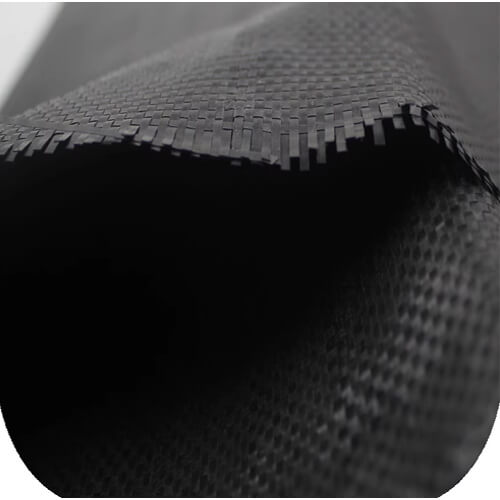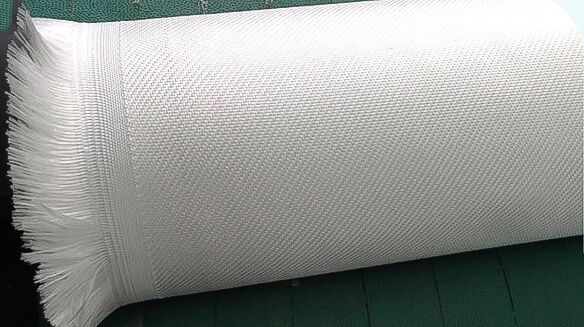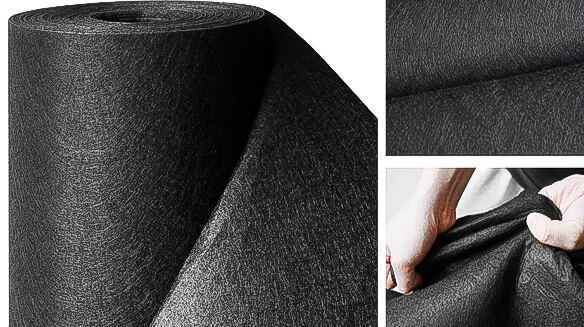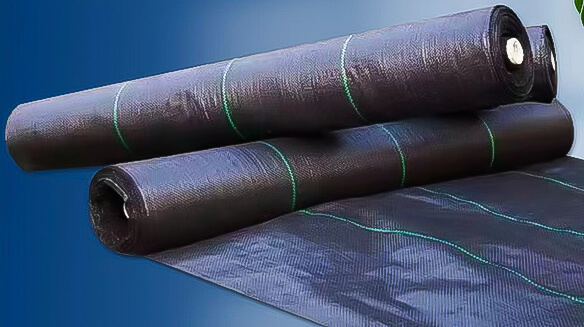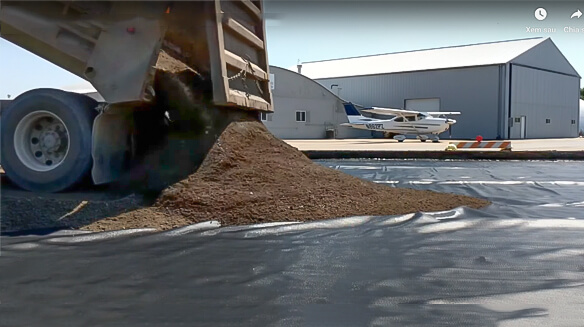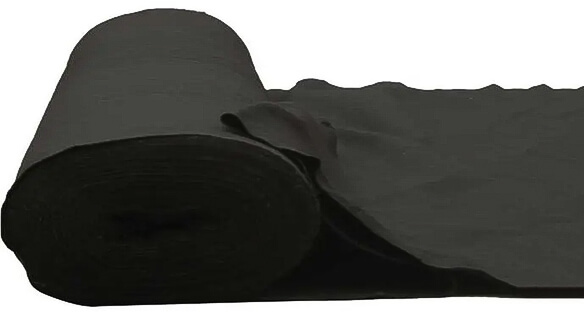Contents
- What is Geotextile Fabric Used For: Detail Woven Geotextiles
- Introduction to Geotextile Fabric and Non-Woven Geotextiles
- Benefits and Functions of Woven Geotextile in Various Applications
- Understanding the Difference between Woven and Non-woven Geotextiles
- Exploring the Multiple Uses of Geotextile Fabrics
- Why Geotextile Fabric is Crucial in Modern Engineering
- All about Geotextiles: Breaking Down the Confusion
- Wrapping It Up: The Versatility of Woven Geotextile
- Conclusion
- FAQs
What is Geotextile Fabric Used For: Detail Woven Geotextiles
Meta: What is Geotextile Fabric Used For? Geotextile fabric is used for soil stabilization and erosion control. For a deeper understanding of this issue explore this article which will give you useful answers and interesting things.
Introduction to Geotextile Fabric and Non-Woven Geotextiles
Geotextile fabric, primarily made of polyester or polypropylene, is a synthetic material. You’ll often find it woven. However, there are non-woven versions with unique benefits. These fabrics are vital in civil engineering for stabilization and erosion control. Woven geotextiles are durable, resisting corrosion, punctures, and UV damage. Hence, they are favorites in road construction. Their strength reinforces road surfaces and ensures the underlying soil stays in place.
On the flip side, what is a Non-Woven Geotextile? It consists of bonded fibers, which are typically joined together by heat or other methods. Their primary role is in drainage systems where they excel. These fabrics expertly filter sediments while allowing water to flow. Moreover, they help maintain the separation of distinct soil layers. Wherever soil and water interact, geotextile fabrics prove to be indispensable, showcasing their versatility.
In essence, delving into geotextile fabric design reveals its importance in projects. These materials ensure structures stand the test of time.
Types of Geotextile Fabric
Geotextiles play diverse roles in gardening and construction. Let’s explore some key types:
- Woven Geotextile Fabric: Think of the structure of your clothes. This popular geotextile follows that pattern. Polypropylene filaments intertwine to form it, granting it superior stabilization strength compared to others.

- Non-Woven Geotextiles: These are usually manufactured from synthetic materials such as polyester or polypropylene. Their permeability makes them perfect for projects that require filtration and separation.

construction, geotextile, landscape fabric -habitatsc.org - Needle-Punched Geotextiles: Indeed, non-woven fabrics undergo a special needle-punching process, resulting in a felt-like texture. This unique design makes them perfect for drainage tasks in both gardens and construction areas.
- Heat-Bonded Geotextiles: Also known as thermally-bonded geotextiles, these are non-woven fabrics that have been heated until the fibers fuse together to form a strong, durable fabric beneficial for soil reinforcement and protection.
- Composite Geotextiles: This category combines characteristics of both woven and non-woven geotextiles, making them advantageous for a wide array of applications including ground stabilization and drainage improvement.
Benefits and Functions of Woven Geotextile in Various Applications
Woven geotextile fabric offers several benefits and functions in various applications, including filtration, separation, reinforcement, and stabilization.
Filtration
Geotextiles are a game-changer for filtration in gardening and construction. Made mainly of polypropylene and polyester, these permeable fabrics outshine traditional soil filters.
Their major role? They excel in subsurface drainage systems and erosion control. They hold back soil particles but let water flow seamlessly. This function ensures drainage systems remain unclogged, fostering improved water management.
The benefits don’t stop there. Geotextiles refine soil quality by sifting out undesirables. Additionally, they cut down on excavation needs and are more eco-friendly than many standard practices.
To maximize their potential in your upcoming projects, grasp the filtration prowess of geotextiles.
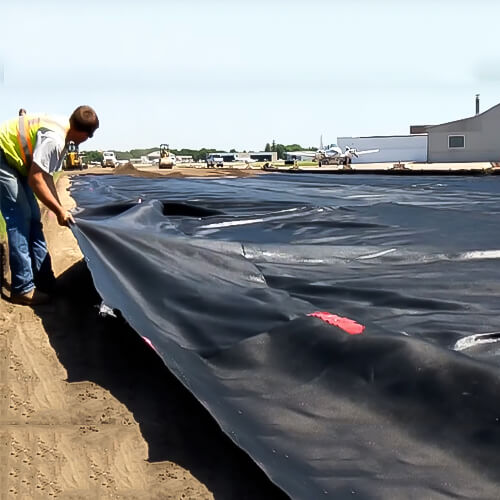
Separation
Woven geotextile fabric is vital for separation in both construction and gardening tasks. It’s tailored to stop materials like soil, gravel, or aggregates from mixing.
How do they work? They form barriers between layers, ensuring materials stay put without contamination, and upholding the structure’s solidity. These fabrics also lend stability to irregular terrains, giving a firm foundation for structures and roads.
Besides, they’re budget-friendly. They slash maintenance expenses and enhance the functionality of surfaces, whether paved or not. No wonder they’re indispensable in numerous construction endeavors.

Reinforcement
Reinforcement is key for lasting stability in gardens and construction sites. Woven geotextile fabrics are central to this process.
These fabrics boast high tensile strength, enabling them to bear heavy loads and halt the shift of materials, including soil and aggregates. By inserting these geotextiles between layers, like under roads or within retaining walls, they adeptly spread out stress, bolstering the structure.
They ward off issues such as cracks, sinkholes, or weak bases stemming from shaky ground conditions. Given their knack to fortify soils and maintain construction project soundness, woven geotextiles are a must-have for builders and gardeners aiming for enduring excellence.
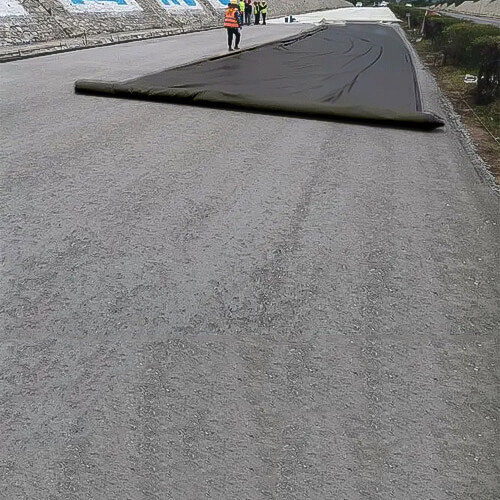
Stabilization
For robust foundations in construction and thriving plants in gardens, soil stabilization is paramount. Here, woven geotextile fabric steps in.
Crafted from interconnected polypropylene filaments, woven geotextiles boast a strength edge over non-woven types. They shine in reinforcement and stabilization roles, ensuring soil stays put even under weighty loads or in areas prone to erosion.
From anchoring roads to nurturing gardens, woven geotextile fabric delivers the needed backing. Its permeable nature ensures water seeps through, yet stops fine soil particles from shifting. This makes woven geotextiles a top choice in various uses.
Understanding the Difference between Woven and Non-woven Geotextiles
Distinguishing between woven and non-woven geotextiles is crucial for understanding their applications. Woven geotextiles, made by weaving threads, are known for their high strength. They excel in stabilization and reinforcement tasks. Due to their strength, they’re the choice for projects needing strong fabrics.
In contrast, non-woven geotextiles display a felt-like, random structure, making them very porous. Their design primes them for drainage, filtration, and protection, where water flow is key.
The core differences? Woven geotextiles have a structured, less permeable weave, while non-woven ones offer more permeability, enabling fluid passage.
In essence, woven and non-woven geotextiles cater to diverse geotechnical needs. It’s vital to match the fabric type with its intended task for optimal results.
Characteristics and Uses of Woven Geotextiles: A Detailed Insight
If you’re in gardening or construction, understanding woven geotextiles is essential. These fabrics stand out for their robust load-bearing ability and tensile strength, making them a top choice for projects needing solid reinforcement.
Their filtration properties are notable too. They allow water through while curbing soil erosion. Plus, with corrosion resistance and lasting durability, they’re built for tough environments.
Commonly, in construction, you’ll find them in road projects and French drains, thanks to their drainage prowess. In a nutshell, woven geotextiles bolster stability in gardens and construction tasks. They offer reinforcement, separate layers, filter, and aid drainage efficiently.
Exploring the Multiple Uses of Geotextile Fabrics
Geotextile fabrics are engineering marvels with diverse applications spanning water management, roadwork, and soil anchoring, to name a few. A prime function? Water resource conservation. These fabrics excel in drainage and filtration, guiding water flow and minimizing erosion. From crucial dams to garden terrains and complex water channels, geotextiles are instrumental in water regulation.
Woven geotextiles stand out for their strength and endurance. Needed for enduring ground anchoring, their hallmark traits are impressive water flow capacity and tensile resilience. Frequently found in roadbeds, embankment guards, and waste dumps, they form a dependable foundation.
Though we’ve explored geotextiles and their woven and non-woven variations, it’s vital to stress that while their uses can intersect, often their functions stand apart, driven by unique properties. Recognizing geotextiles’ multifaceted roles underscores their unparalleled significance in numerous arenas.
How Woven Fabrics are Beneficial in Landscape Applications
Woven fabrics are game-changers in landscape applications. Created from polyester or polypropylene yarns, woven geotextile fabrics stand out for their strength and longevity. Their prime role in landscaping? Soil stabilization and enhanced drainage, are two pervasive challenges.
A standout feature of woven geotextiles is their prowess in differentiating fine soil from larger aggregates. This distinction preserves a landscape’s design integrity. They let water seep through while anchoring the soil, curbing erosion, and bolstering plant growth.
Furthermore, they’re foundational for walkways, Geotextile Driveway Fabric, and roads, acting as a shield against sinking and rut formation. When integrated, these fabrics prolong the life of such structures. To sum it up, woven geotextiles are landscaping allies, combatting erosion and amplifying the durability of pathways, ensuring a vibrant, well-maintained landscape.
Why Geotextile Fabric is Crucial in Modern Engineering
Geotextile fabric is undeniably pivotal in today’s engineering world. Touted as a transformative innovation, geotextiles feature in everything from massive infrastructure endeavors to petite home projects like crafting an herb garden or positioning an egress window.
Take the Wellcraft egress window, for instance. It employs geotextile fabric to combat soil erosion around its window well. On a grander scale, engineering projects use geotextiles in water-containment constructs, like reservoirs, to diminish water pressure effects, thus boosting the structure’s lifespan. Reflect on canals: geotextiles help retain the structure while thwarting water leaks, amplifying both function and lasting reliability.
In essence, be it for a state-of-the-art bridge or a humble herb garden, woven geotextile is redefining how we approach both infrastructural and eco-friendly tasks. With attributes like flexibility and longevity, it’s solidifying its place as a cornerstone of modern engineering.
Essence of Landscape Fabric: Making Gardens Flourishing
Landscape fabric is a gardener’s ally, propelling gardens to thrive. When you delve into raised bed gardening, geotextile fabric, positioned beneath the soil, proves invaluable. This fabric acts as a shield against weeds, ensuring your garden stays pristine and vibrant. In contrast, conventional plastic fabrics can hinder beneficial soil bacteria, which in turn negatively impacts plant growth.
Woven geotextile fabric shines again in crafting silt fences. These fences excel in managing sediment runoff, helping gardens retain essential nutrients. Most kits come with a user-friendly geotextile fabric, streamlining installation.
Another boon? Efficient water management. Landscape fabric distributes water evenly, maintaining the ideal moisture level for plants. This even diffusion enriches plant growth and, over time, amplifies garden yields. In sum, with the integration of geotextile fabric, especially the woven kind, modern gardening beautifully marries science with age-old techniques.
All about Geotextiles: Breaking Down the Confusion
Geotextiles: demystifying this engineering marvel is essential, and it’s simpler than it sounds. At their core, geotextiles are mesh-like fabrics pivotal in diverse engineering and landscaping endeavors. Their scope and utility span far and wide. Their salient features, such as soil segregation, effective water filtration, and providing stability, render them invaluable in pursuits like roadworks and shoreline defense.
There are two primary geotextile categories: woven and non-woven. Woven geotextiles, revered for their strength and durability, cater to tasks demanding formidable stability. Their prowess shines in landscaping, warding off unwelcome weeds, yet permitting essential water and nutrients to permeate, nurturing thriving gardens. Conversely, non-woven geotextiles earn accolades for their high permeability, making them the go-to choice for drainage scenarios.
Acquainting oneself with geotextile’s myriad applications and benefits underscores their pivotal role in contemporary engineering. Their ubiquitous presence across projects attests to their efficacy and adaptability, markedly elevating the outcomes of myriad engineering and landscaping ventures.
Economical and Environmental Advantage of Geotextiles in Gardens
Geotextiles are an embodiment of how modern technology intersects with nature to produce optimal results. Their usage in gardens epitomizes a win-win scenario, addressing both economic concerns and environmental sustainability.
From an economic standpoint, the moisture-retaining ability of geotextiles reduces the frequency of watering, cutting down on water usage and subsequently reducing costs. This is an advantage that not only results in monetary savings but also conserves a precious resource, especially in regions where water scarcity is a growing concern.
Environmentally, geotextiles champion a non-toxic approach to weed control, eliminating the dependency on chemicals that can leach into the soil, harm beneficial microorganisms, and find their way into water sources. This clean approach contrasts with plastic solutions, which degrade over time and introduce microplastics into the soil and, eventually, the broader ecosystem.
Furthermore, the erosion control that geotextiles offer ensures that the fertile top layer of the garden soil, rich in nutrients and organic matter, remains undisturbed. This ensures healthier plant growth, reduces sediment run-off into water bodies, and sustains the nutrient cycle of the garden.
To encapsulate, geotextiles are not just a functional inclusion in a garden setting but a nod to forward-thinking, sustainable gardening. They’re indicative of the broader shift in the horticulture and agricultural sectors, moving towards practices that are both economically viable and environmentally conscious. As we forge ahead, recognizing and adopting such sustainable solutions is paramount in nurturing our planet for future generations.
Wrapping It Up: The Versatility of Woven Geotextile
Absolutely. The woven geotextile fabric stands as a testament to human ingenuity and our evolving relationship with the environment. Its multifaceted applications cater to both intricate garden landscapes and massive engineering projects, highlighting the fabric’s unique balance of delicate precision and robust durability.
Moreover, the widespread adoption of geotextiles underscores a growing recognition of their benefits across industries. These fabrics successfully address real-world challenges, ensuring stability, reducing maintenance costs, and enhancing the life expectancy of projects. In gardens, they act as silent caretakers, facilitating optimal growth conditions while keeping invasive elements at bay.
In a world where sustainability and efficiency are becoming paramount, woven geotextiles are not just a passing trend but a lasting solution. They exemplify a blend of technology and nature, offering pragmatic solutions that respect and enhance our natural surroundings.
Ultimately, as we continue to push the boundaries of innovation, materials like woven geotextile fabric will be at the forefront, proving that with the right tools, we can build a future that’s both sustainable and efficient.
Conclusion
Geotextile fabrics, particularly woven geotextiles, embody the harmonious fusion of technology and nature. Their diverse applications, ranging from intricate garden landscapes to vast engineering endeavors, highlight their unparalleled versatility and importance in today’s world. With unique strengths in reinforcement, filtration, and stabilization, woven geotextiles address numerous challenges faced in both construction and gardening.
Their prominence in various industries reflects an increasing acknowledgment of their multifaceted benefits, including their potential to boost the longevity of projects, optimize resources, and offer sustainable solutions. As we march towards a future where the balance between human development and environmental sustainability becomes more critical, woven geotextiles stand out as not just a contemporary tool but as a future-forward solution. Through them, we see the potential of innovation to work in harmony with nature, underscoring the essence of sustainable progress.
FAQs
1. What are the common uses of geotextile fabric?
Geotextile fabric plays a pivotal role in modern construction and landscaping. It excels in erosion control and ensures soil remains stable. This material also enhances drainage systems and is a key component in road construction. Additionally, it’s invaluable for various filtration tasks. With geotextile fabric, both construction and environmental projects achieve longer-lasting results.
2. How does geotextile fabric help with erosion control?
Geotextile fabric serves a dual purpose. It not only stabilizes slopes to curb soil erosion but also lets water flow seamlessly. By retaining soil particles, it ensures landscape integrity while facilitating proper drainage.
3. Can geotextile fabric be used in landscaping projects?
Indeed, geotextile fabric plays a pivotal role in landscaping. It efficiently separates materials like gravel from soil, curbs weed invasion, and enhances ground stability. This multi-functionality ensures gardens thrive and pathways last longer.
4. Is geotextile fabric suitable for use in freshwater or marine environments?
Absolutely! Geotextile fabric thrives in both freshwater and marine settings, thanks to its resistance to chemicals and microorganisms. Its robustness offers stellar filtration and shields against erosion, even under demanding aquatic conditions.

